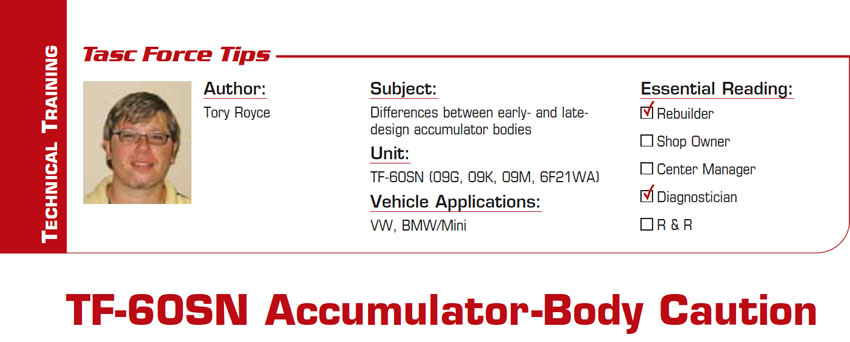
TASC Force Tips
- Subject: Differences between early- and late-design accumulator bodies
- Unit: TF-60SN (09G, 09K, 09M, 6F21WA)
- Vehicle Applications: VW, BMW/Mini
- Essential Reading: Shop Owner, Center Manager, Diagnostician
- Author: Tory Royce
So you’ve got it figured out. The cause of that TF-60SN converter issue you’ve been fighting has finally been narrowed down to wear in the lockup-clutch control bore. Well, before you reach for that pot of gold at the end of the rainbow, here are a couple of things you should know.
There are actually two different versions of the TF-60SN accumulator body in circulation. Figure 1 shows the visual differences between the two castings. This is the simplest way to identify which style you have.
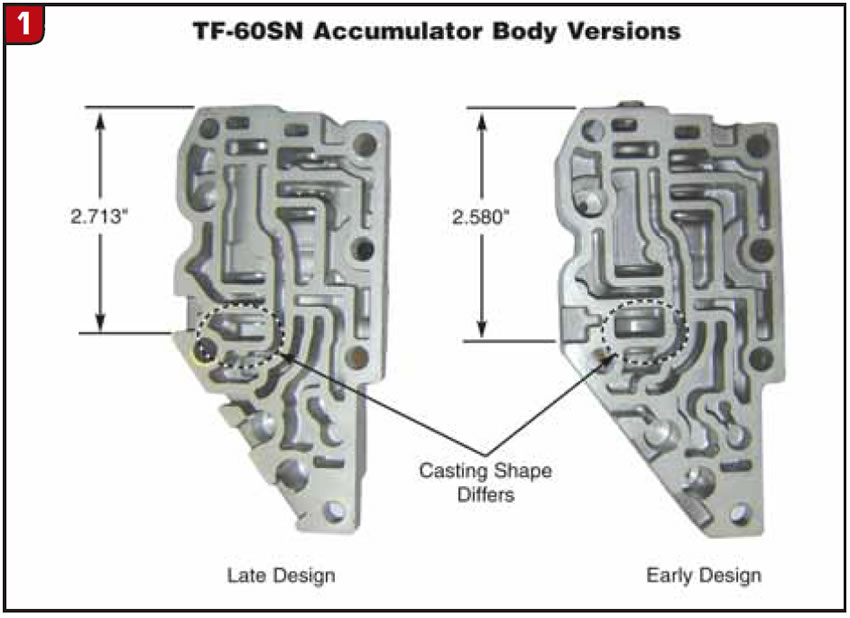
Figure 2 shows, although it is not as obvious, that there is a difference between the parts used in the two versions. Look closely at the spring end of the valve.
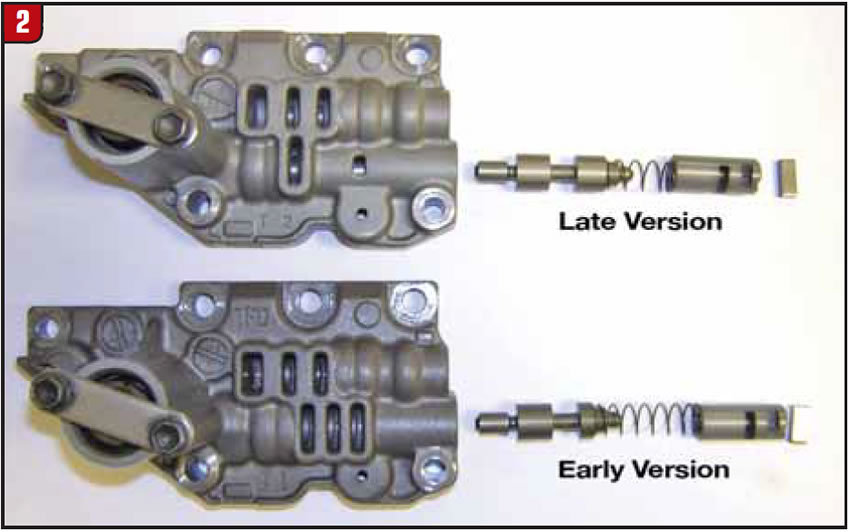
The good news is that the same valve repair kit for the lockup-clutch control bore can be used to repair either version. The catch is that the installation procedure is not the same, because of the difference in bore length.
Why is the installation procedure so critical? If the late-body installation procedure is used in an early body, the mistake will be frustrating but obvious: It will not all fit in the bore. At least you will know you have a problem. However, if an early-body installation procedure is used in a late body, you will be able to install the parts, re-assemble the unit and reinstall it into the vehicle. You may not discover that you do not have lockup until the road test.
Figures 3 and 4 show the lineup difference between the two installation procedures. Early-style accumulator bodies, having the shorter valve-body bore length, use the valve/sleeve, spring and plunger/sleeve combination. Later-style bodies, because of their longer bore length, use all the same components plus a valve-stem cap and a spacer to make up the length difference.
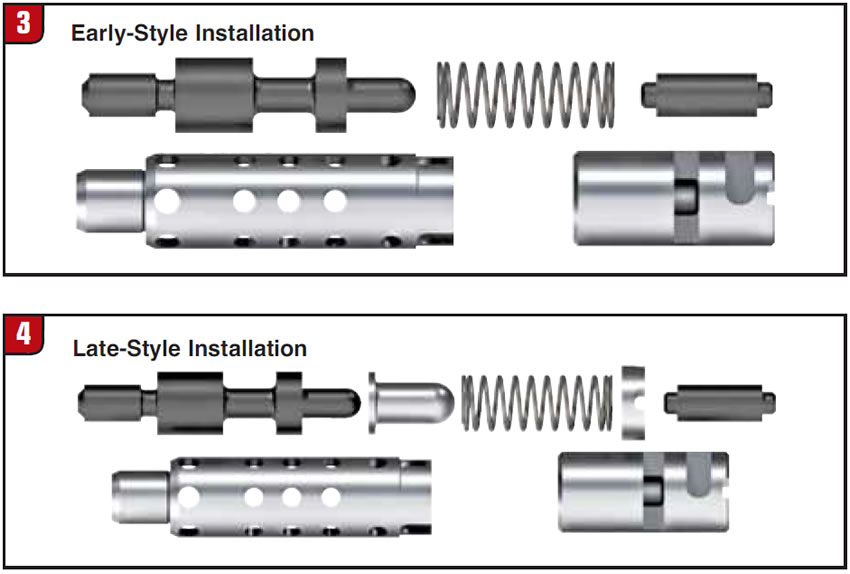
Remember that TF-60SN is the AW designation but you may see and recognize this unit under a variety of names. VW 09G, 09K and 09M are common to many of you, with 09G often used to refer to any of the three. BMW/Mini builders know this unit as the 6F21WA. Regardless of the label or designation, the other thing you should remember about this unit is that the accumulator body is extremely small and not easily secured for reaming. You should buy or fabricate an adapter plate that will allow you to securely mount and accurately position this valve-body section for reaming (Figure 5).
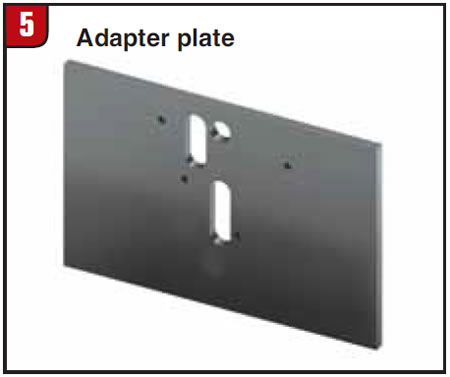
Once you have identified and used the appropriate installation procedure, you will be on your way to that pot of gold and a happy customer.

Tory Royce is a Sonnax Technical Support Specialist and a member of the Sonnax TASC Force (Technical Automotive Specialties Committee), a group of recognized industry technical specialists, transmission rebuilders and Sonnax Industries Inc. technicians. E-mail Sonnax Tech Support at [email protected] or call 800-843-2600. ©2010 Sonnax Industries













